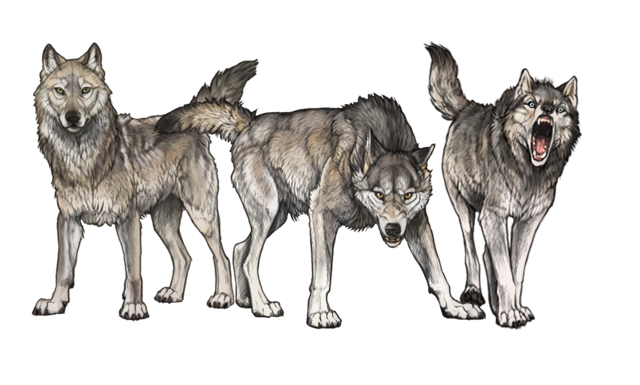Accurate Mode Challenge Information
My wolf pack is under a custom set of rules that makes the pack realistic to the real world. Although I've seen set of rules made by others that may be similar to mine (I have not read these rules officially), I have decided to create my own in order to make the experience adapted to me specifically. Anyone is welcome to take on this challenge, but I would appreciate credit. Feel free to change the rules to fit your standards, goals, and interests. If you have any questions, feel free to PM me.
Challenge Rules
Each rule may span in complexity; I encourage anyone who is planning to take on this challenge to do your own research on wolves. Nonetheless, (possibly inaccurate) information on wolves will be available in this forum. The information that will be provided is my own research which is why it may not be completely accurate. Wolf pack information will be provided in deeper detail in different places in addition to the facts within the rules below.
-
1. Your wolves should have a natural look. This includes your wolf's colors and the shape of their patterns and pupils. Your two starter wolves, which will serve as your first breeding pair, are the most important because they'll set the standard of the rest of your pack. If you have two color-bomb wolves, you'll likely get one in return; if you have two naturalistic wolves, you'll likely get one in return.
2. Wolves should breed within the winter season (lasts six rollovers / three months). Wolvden does a good job at keeping the ratios of gestation time and season time accurate (as far as I can tell). A wolf will give birth in 4 rollovers (or 2 months) which will lead into spring. I recommend breeding your wolves later in winter to ensure that your pups are born in spring, but it doesn't matter that much. Furthermore, your wolves should be at least two years old to breed. Your wolves should also have only one litter per year. Wolvden will do a decent job at separating the litters already with cooldowns — each rollover signifies a half of a month which means you'll have to wait 20 rollovers (including pup weaning time) or 10 months until you can breed again.
3. You should have only one breeding pair (otherwise known as "alphas") in your pack. These are the parents and will fill the pack with their offspring. Many people are misinformed about pack dynamics. There aren't really "alphas", "betas", or "omegas" because a wolf pack is a family unit. Wolves rarely join a new pack, so inviting NBWs or wolves you have bought into your pack should be kept limited. I'm not well informed with how it works, so I recommend leaning away from doing that. Furthermore, I like to separate my pack with the ranks "alphas" (despite having said there are no alphas in packs, it's a good title to label your breeding pair), "subordinates" (adult wolves in your pack), "adolescents" (beginning to tag along during hunts), and "pups" (exactly what it sounds like).
4. To keep it realistic and more challenging, your wolves should solely survive on the food they hunt. This may be difficult in the beginning with only your alphas there to hunt. You may choose whether you'll have non-canon wolves helping out, especially during the early stages. While playing as your lead wolf, prey may be found or hunted in explore. You may decide on what food is and is not realistic (personally, I will count anything that a gray wolf would hunt in real life, carcasses laying around, and any form of scavenging). I recommend to take notes of the food you've found and hunted so you know what you should either sell, giveaway, or bury in order to get rid of excess food.
5. Your herbalist should not be canon. Of course, you need a way to heal your wolves, so an herbalist is needed, but making remedies to heal sick or injured wolves is not realistic. Instead, a system of rolling dice to see whether a wolf will be healed or not that day should take place. If the disease is very serious and/or will spread throughout your pack (which may make it too hard to manage), feel free to heal it right away to make your experience less stressful.
6. No decorations should be equipped on to your wolf. Backgrounds are acceptable as long as they feature a realistic biome. Furthermore, this does not include applications in order to make a wolf look more appealingly natural. |
